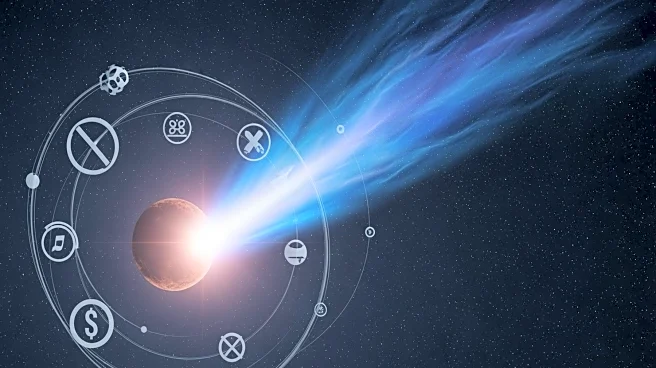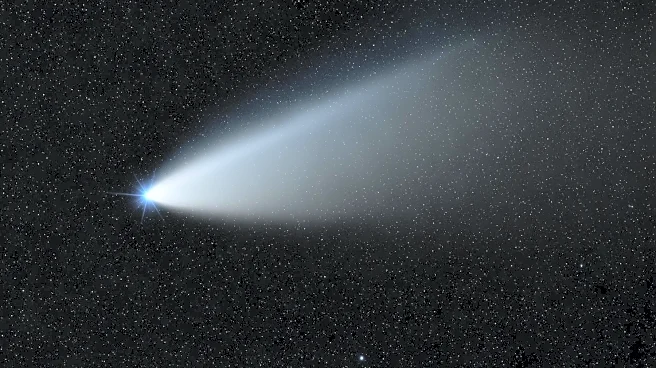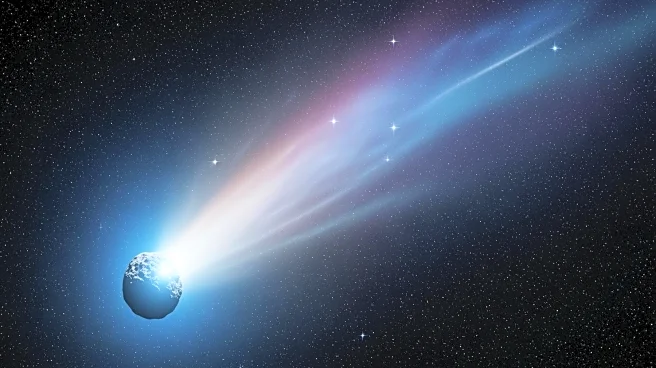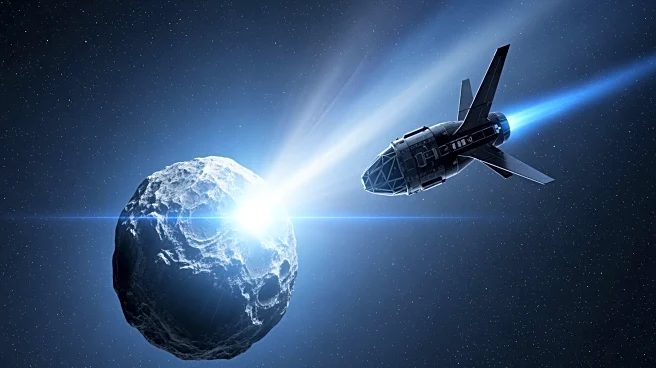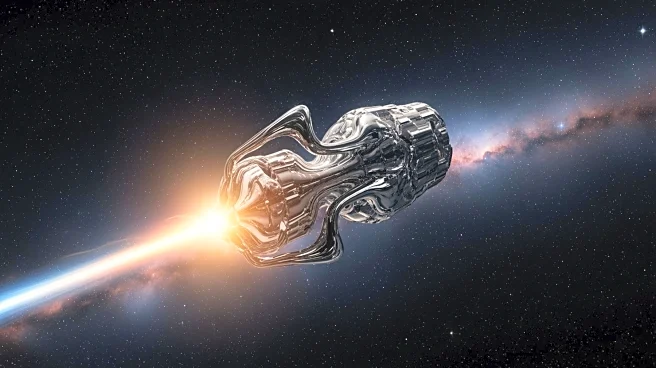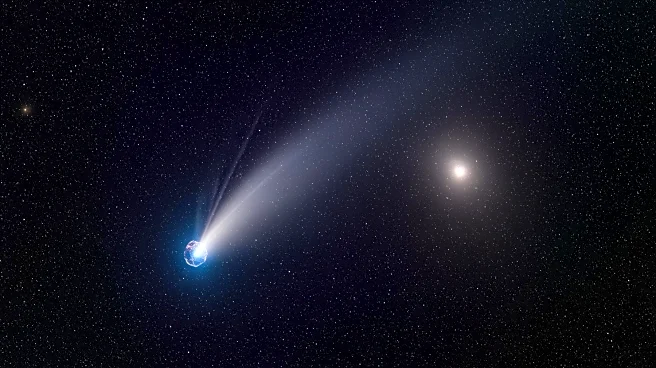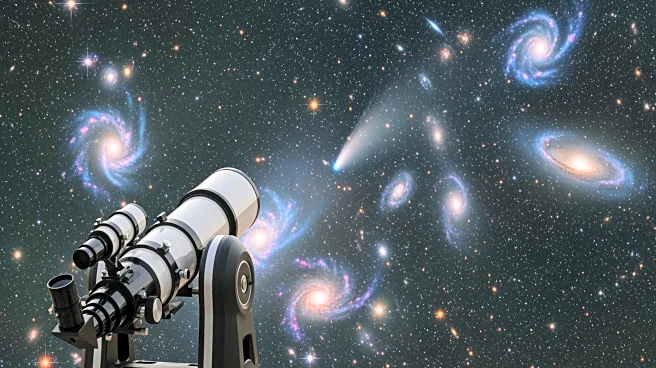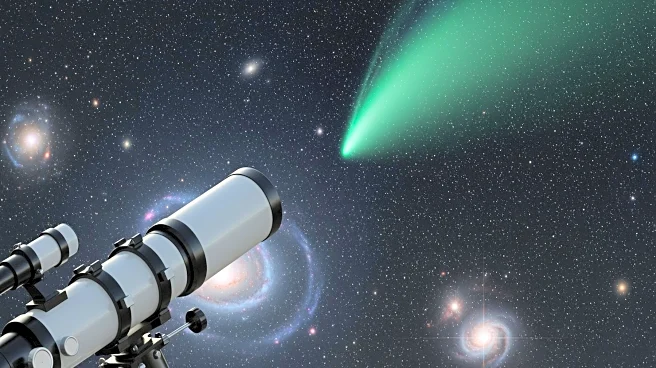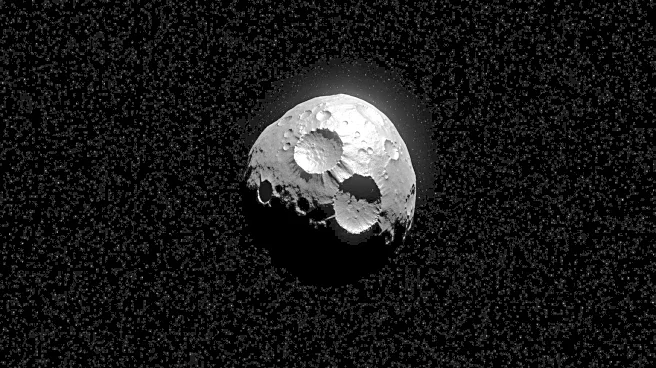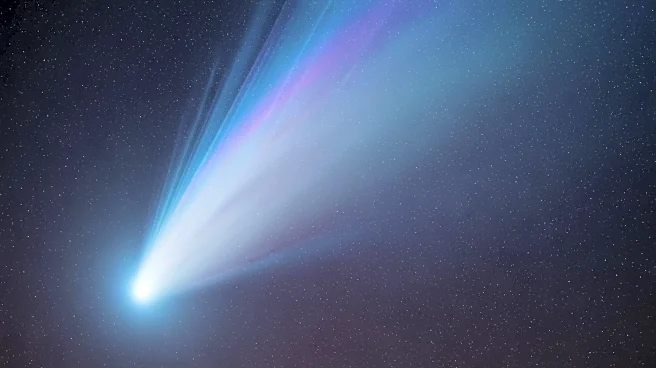What's Happening?
Comet 3I/ATLAS, the third known interstellar visitor to our solar system, has been a subject of fascination and misinformation. Discovered in July, the comet made its closest pass to the sun on October
30, with imagery revealing a rapid brightening. Contrary to media reports suggesting multiple color changes, scientists clarify that the comet's gas coma has not changed colors. The comet's appearance of changing color occurred once when its gas coma became visible and bright earlier in the year. Despite conspiracy theories suggesting the comet is an alien spacecraft, scientists emphasize its natural phenomena, offering insights into conditions outside the solar system.
Why It's Important?
The comet's journey provides a rare opportunity for scientists to study interstellar objects, enhancing understanding of cosmic conditions beyond our solar system. The misinformation surrounding 3I/ATLAS highlights challenges in scientific communication and the impact of conspiracy theories on public perception. Accurate scientific interpretation is crucial for informed public discourse, especially when dealing with phenomena that can be easily misunderstood. The comet's visibility to both professional and amateur astronomers underscores the importance of accessible scientific observation and the role of technology in expanding public engagement with space exploration.
What's Next?
As the comet continues its journey, further observations are expected from various telescopes, including the Hubble Space Telescope and international probes. These observations will contribute to ongoing research and potentially reveal more about the comet's composition and behavior. Scientists aim to dispel misinformation by providing clear, evidence-based updates on the comet's characteristics. The scientific community may also use this event to advocate for better public understanding of space phenomena and the importance of distinguishing between scientific facts and speculative theories.
Beyond the Headlines
The comet's passage through the solar system invites reflection on humanity's place in the universe and the potential for future interstellar exploration. Ethical considerations arise regarding the dissemination of scientific information and the responsibility of media outlets to avoid sensationalism. The event may inspire cultural and educational initiatives aimed at fostering curiosity and understanding of space science among the public.
